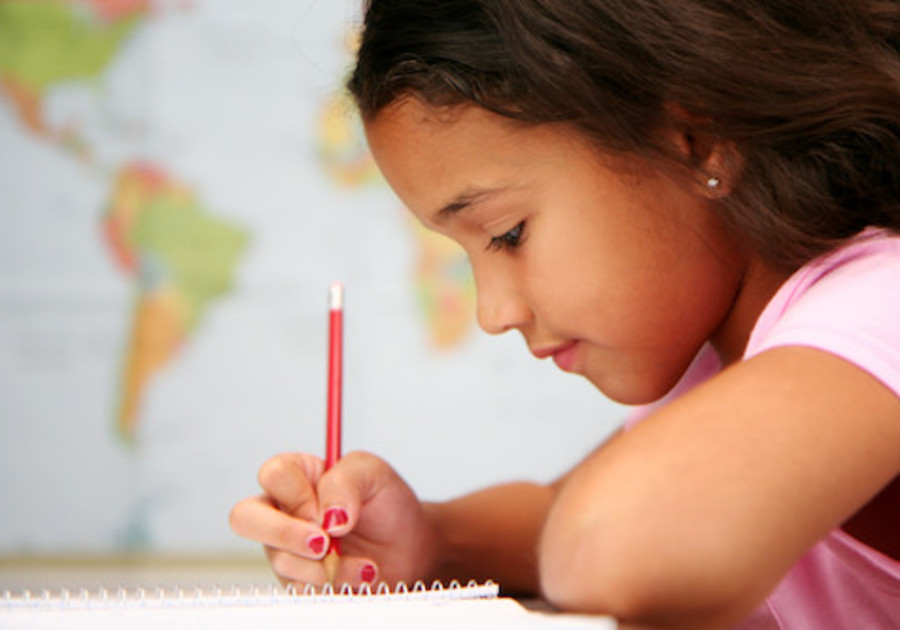Let’s talk about the daunting task of teaching your child how to write! These days, children are expected to know so much by the time they enter into kindergarten. On day one, they may be asked to recite the alphabet and write their name. So how do we teach our little ones these skills? It is important to know where to start and how to build a strong foundation for writing. Let me explain…
Handwriting comes second nature to most of us. Without thinking twice, we sign our name on checks, write up a grocery list, or jot down an important message. But for those learning these skills, we must start with the fundamentals: pencil grasp, letter memory, and proper formation.
Pencil grasp: In order to develop a functional grasp on writing tools, a child must demonstrate adequate strength and dexterity in the small muscles of the hand. Many young children will use a closed, fisted grasp with crayons and markers. With this type of grasp, the movement to scribble or write on paper comes from the entire arm and shoulder, which can cause a child to fatigue quickly and struggle with writing. The ideal grip is a tripod grasp (pictured below) as it allows for our fingers to move the writing utensil fluidly without exerting extra energy from moving the entire arm. Instead of forcing this tripod grasp through writing drills, we can help kids strengthen the necessary muscles in fun ways!
Here are a few ideas:
*Sorting coins into a piggy bank
*Squeezing a spray bottle to water plants, make sidewalk art, or create watercolor drawings (draw with markers on paper, then spray with water to watch the colors spread)
*Make jewelry by stringing a lace with beads, Cheerios, or pasta
*Pom-pom painting: Using a clothespin, pinch a pom-pom. This becomes your “paintbrush” to dip into paint and create a masterpiece.
*Use tweezers or tongs to pick up small items: Use snack items such as marshmallows, cereal, or raisins to make a trail mix.
Letter memory: This doesn’t require a pencil so how is this related to writing? In order to write letters, we obviously have to know what they look like. A good rule of thumb is to start with uppercase letters before introducing lowercase. As a child gets older and is expected to write sentences, difficulty with letter recall can result in issues with written expression and creativity. If we can help our kids to become familiar with all of the letters and what they look like, this becomes automatic and it frees up brainpower for creativity.
Proper formation: Before we focus on letter size or writing on a line, a child has to simply know how to form each letter. The best way to teach this is to follow the “top-down” rule: every letter starts at the top of the paper and goes down. This may not seem critical early on but as handwriting demands increase, these formation patterns will help a child write quicker and neater because it puts less stress on those tiny muscles in our hands. Again, practice writing each letter over and over again is not the only way to do this… in fact, we want to make sure our kids are learning in a fun way so that they do not become frustrated with the task of handwriting.
Here are a few ideas:
*Roll out the shapes of each letter using play dough
*Spread shaving cream all over the table and write the letters into the foam
*Fill clear sandwich/freezer bags with colored hair gel and trace letters on the bag
*Fill a tray with salt or sand and draw letters in it.
*Make cut-and-paste letter crafts by constructing each letter using strips of paper (Pinterest has so many great ideas! And this is great to introduce scissors and work on cutting skills too!)
- - - - - - - - - - - - - - - - - - - - -

If your child is struggling with handwriting or you simply feel intimidated trying to teach your little one these fundamental skills, pOTential pediatrics is here to help! Our occupational therapist is trained in the Handwriting Without Tears® Program and provides individualized strategies and intervention to help your child become a successful writer. Our occupational therapist specializes in pediatrics and treats children in the comfort of their own home. Call or email us to schedule a consultation or comprehensive evaluation.
** Mention Macaroni Kid for a free consultation to discuss your concerns and child’s needs.
Phone: (240) 876-0961
Email: potentialpediatrics@gmail.com
Visit our website at www.potentialpediatrics.com to meet our therapist and learn more about our private therapy and handwriting mini-camps this summer!



